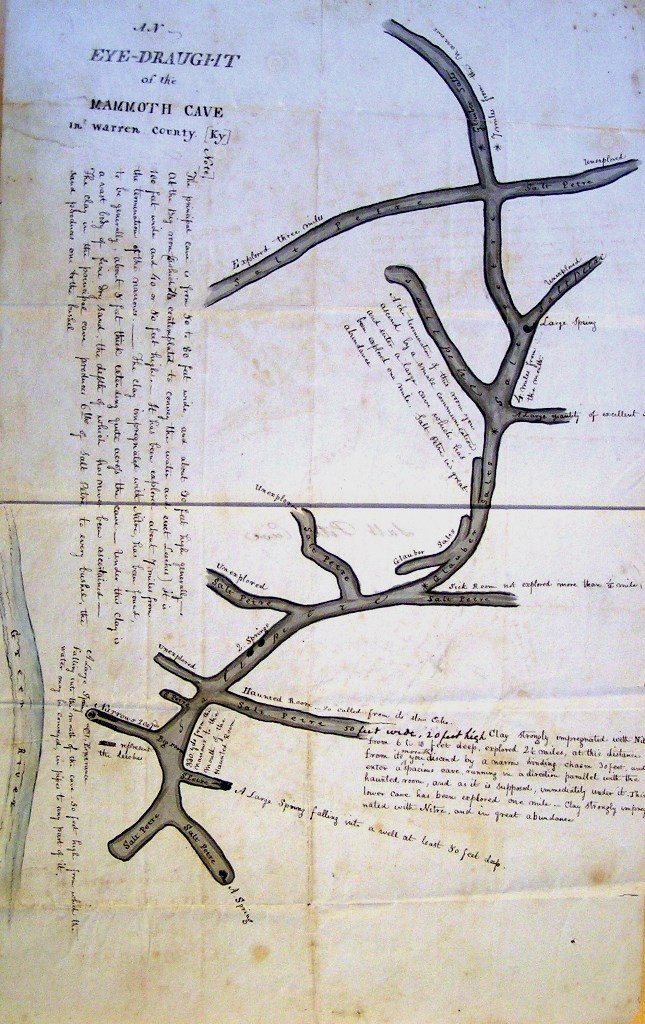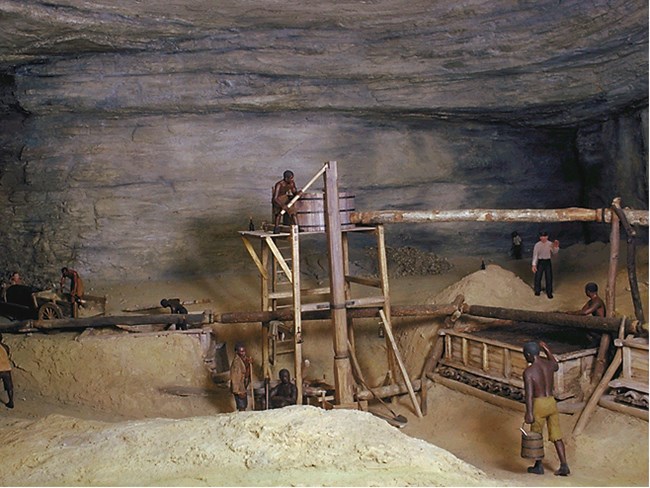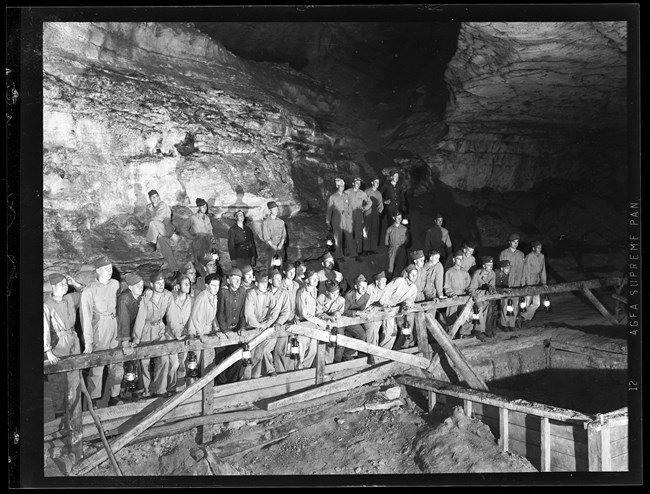Last updated: April 4, 2023
Article
From Dirt to Gunpowder


Saltpetre Mining in Mammoth Cave
Thousands of years of occupation by bats who deposited guano in the soil of Mammoth Cave and other area caves made the cave dirt rich with a compound called calcium nitrate. Calcium nitrate is a mineral that can be mixed with other high potassium materials to create potassium nitrate, or saltpetre, as it is more commonly known. Saltpetre is an principal ingredient in black gunpowder.
Mining saltpetre from the cave was extremely profitable in the early 1800’s, and became even more so with the start of the War of 1812. Demand for gunpowder was at an all-time high during the war, as the importation of gunpowder had become very difficult due to the British blockade of many eastern sea ports.
The mining process involved extracting the calcium nitrate using water and large square vats to filter the cave dirt. A solution of water and calcium nitrate would then be pumped to the surface where it was combined with materials such as wood ash, and sometimes even ox blood, to create the saltpetre.
Saltpetre mining was not easy work, and not many people were willing to work in the cave in the mine. Most of the workers were enslaved African American men. Many of them were leased from nearby states, then were brought to Mammoth Cave to shovel, haul, and sift the cave dirt, working long hours in poor conditions.

These enslaved miners built many of the first trails inside Mammoth Cave. They hauled rocks away from the center of the passageways and laid down flat rocks in order to make it easier for their carts, pulled by oxen and donkeys, to traverse the passages and gather more dirt for the mining operation.
The War of 1812 ended in 1815, and the demand for saltpetre fell dramatically. Eventually the mining operation stopped. Today, relics from the days of saltpetre mining can still be seen just inside the Historic Entrance to Mammoth Cave. The owners of the cave left behind the large vats and the wooden pipes they used to move water. Now, these artifacts are over 200 years old, preserved by the environment of the cave.

With the end of saltpetre mining came a new opportunity. Mammoth Cave now had a reputation as being an underground marvel, and people wanted to travel to Kentucky to see it. As early as 1816, travelers from other states, and eventually other countries, journeyed to Mammoth Cave to see what wonders it hid in the darkness of its reaches.
Now that the owners of the cave found themselves in the tourism business, they needed tour guides. Many of the first guides were members of local families such as Holton, Miller, Gatewood, and Shackelford, but by 1838 enslaved African-American guides held a more prominent presence guiding tours. These enslaved people would go on to blaze the trail for exploration and tourism of Mammoth Cave.
